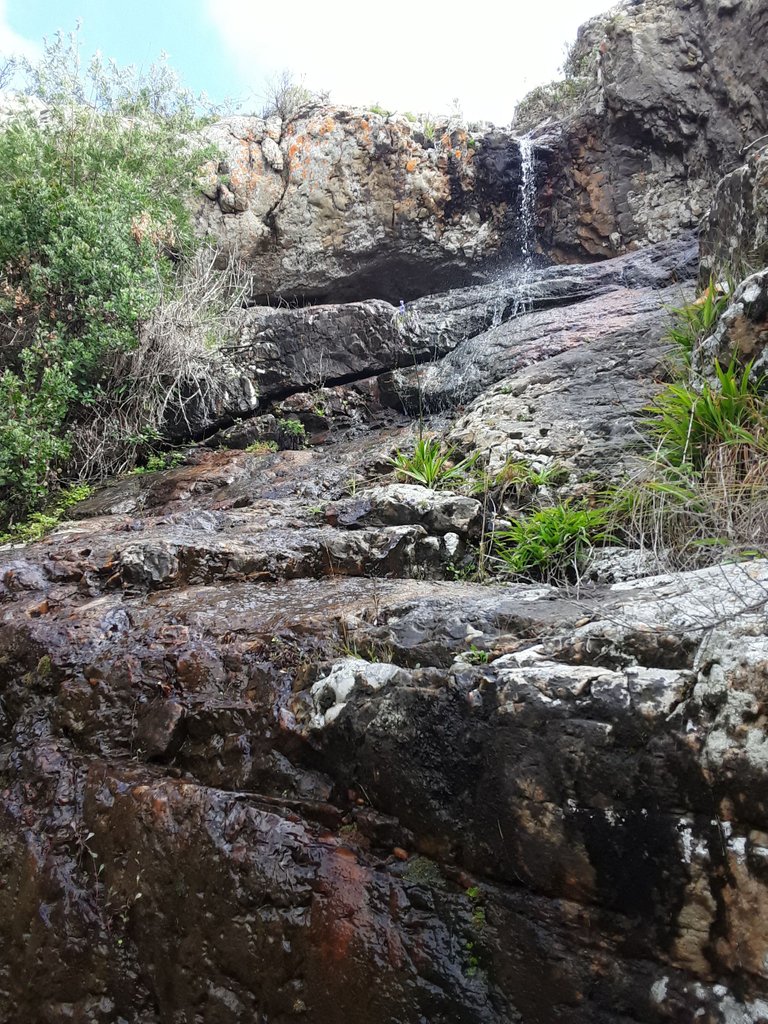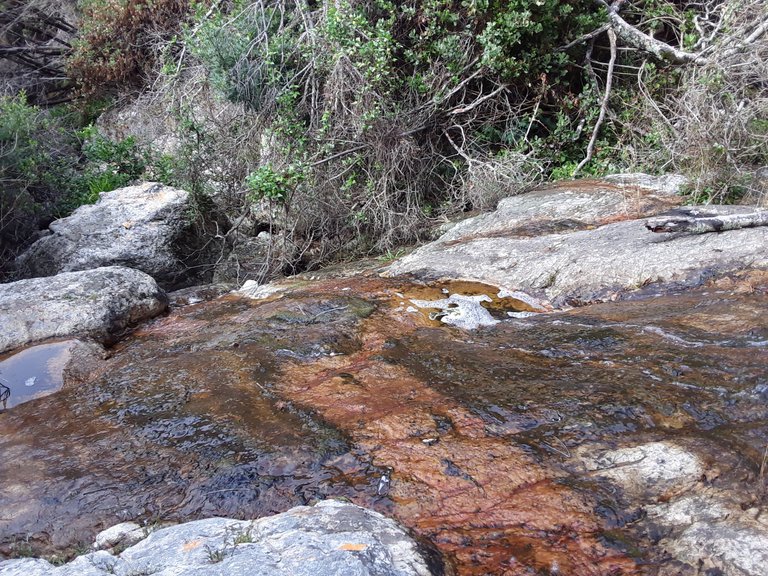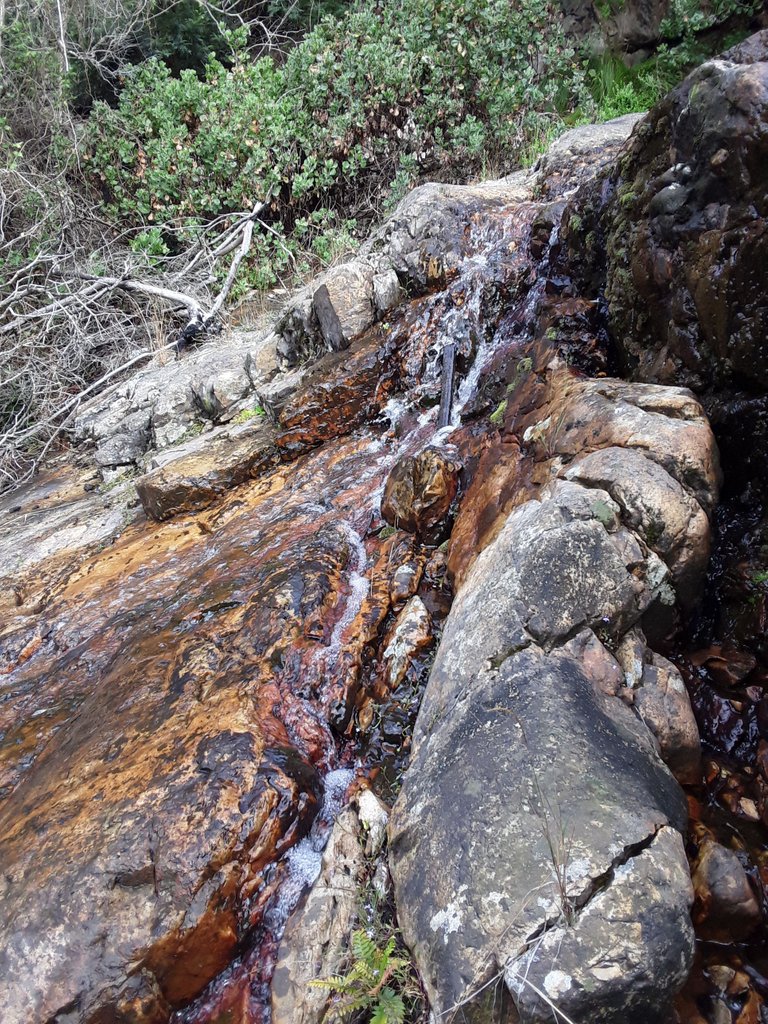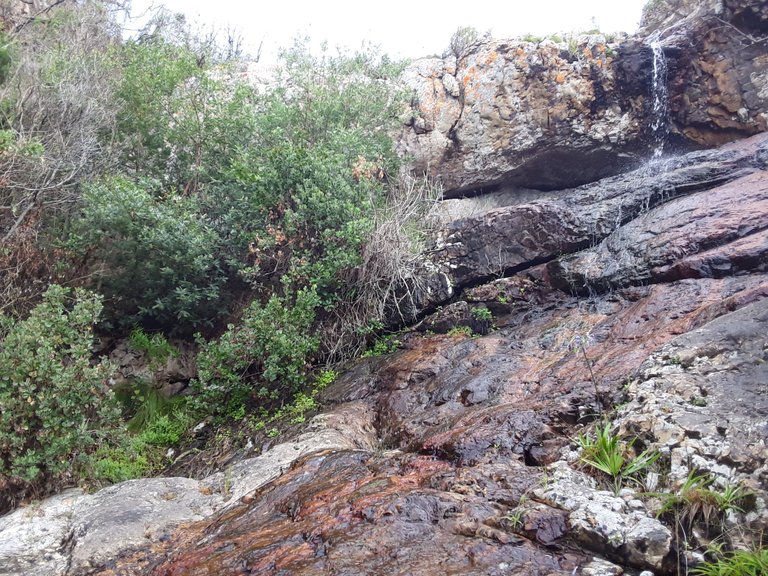With summer here now in the southern hemisphere, the little waterfall on my hiking trail has slowed to a trickle. The majority of the rainy season is over for now and the vegetation is bursting forth to stretch skyward in all its glory. I hike this trail every week so get to see it in all its various shapes and appearances, depending on the season and weather on the day. It’s a real nature paradise for me and I take shelter of it regularly in order to maintain a sense of peace and well being.

Situated on the coastline at the southernmost shores of Africa, this natural stream is supplied by rainfall which makes the water drinkable. I have tried it several times and it tastes great. I’ve had no bad reactions from it. Even though there may be plenty of organic matter and plant or algae living in and around it, still it appears to be reliable. Of course, one could boil it to be safe if you like, but on my hikes I simply drink it as it is, directly from the stream.
In the coming weeks, as summer progresses, the stream may actually come to a halt and the flow will cease for a while. Nevertheless, there is always the odd little summer rain shower and it can continue trickling indefinitely. It just depends on the general rainfall which varies from year to year slightly. There have been drought years when it stays drier than usual. But we are in a decent rainfall cycle so far, with the last bad drought several years ago.

When the flow is low, the pools of water remain and I presume there may be an underground flow - if anything. Water is naturally such a crucial ingredient and it’s a blessing to have this river flowing for most of the year so close to my home and on the hiking trail that hugs the cliffs overlooking the sea below. In really rainy seasons during the winter, it pours down the hillside and over the edge of the cliffs like a torrent. In fact it becomes almost impossible to cross the river as usual, despite it being just a stream in a narrow gorge usually. I can do it but have to clamber about more than usual to get across without getting wet. It makes the hike so much more fun. If necessary I just take off my shoes and walk across the fast-flowing rush of rainwater that makes its way to the sea.
Once over the cliffs it pours into the ocean from the shore. There are actually two separate cliff edges which are waterfall points, within a few meters or yards of each other, making up a series of two distinct drops to lower levels each time. The photos here show the upper ledge of the two. In a previous post recently I showed the pool at the second cliff, after which the water just drops about 50 meters in a bigger fall, down to sea level. Then it meanders a few more meters to the shoreline itself and pours into the crashing waves of the ocean to be added to the salty sea.

It looks like such a flow of abundance but also like a waste to see all that fresh drinkable rainwater pouring into the sea, sometimes for days or weeks on end. Such is life though. There is a never ending cycle of abundance and scarcity in cyclic fashion with each passing season. It’s quite mild compared to – say for example – the summers and winters of Europe or the Northern hemisphere in general, where masses of snow make life outdoors intolerable I presume, at least for a while.
There’s none of that here at 34 degrees south on the coast of Africa. It’s mild all year long and I shudder to imagine what folks endure in the colder northern climate. No wonder the indigenous black African tribes remained apparently primitive in their dress and lifestyle all the way up until the European settlers arrived in the 1600s. They simply didn’t need to endeavor for survival. They didn’t even really need clothes as the weather is so mild. And they certainly didn’t need brick houses to protect them from the elements.

It’s still like that today. The conditions are so mild that locals don’t bother to work too hard. It not like they need to stock up for winter or risk dying of starvation or freezing. Obviously civilization has shifted over the centuries and the economic and societal conditions are worlds away from what they originally were a few hundred years ago. Still, the climate is the same and so the attitude could be called “island style” I presume, where every day is pleasant beside the sea with an abundance of easy food to source. If you have healthy conditions like that, along with mild weather and enough food, then all the rest are frills really, especially here in Africa, the biggest island of them all.
(photos my own)
We appreciate your work and your publication has been hand selected by the geography curation team on behalf of the Amazing Nature Community. Keep up the good work!
Awesome, many thanks, much appreciated.
excelentes fotografías, hermoso lugar / great photos, beautiful place
Thank you friend, I'm glad you like the photos. It's a paradise for mw.